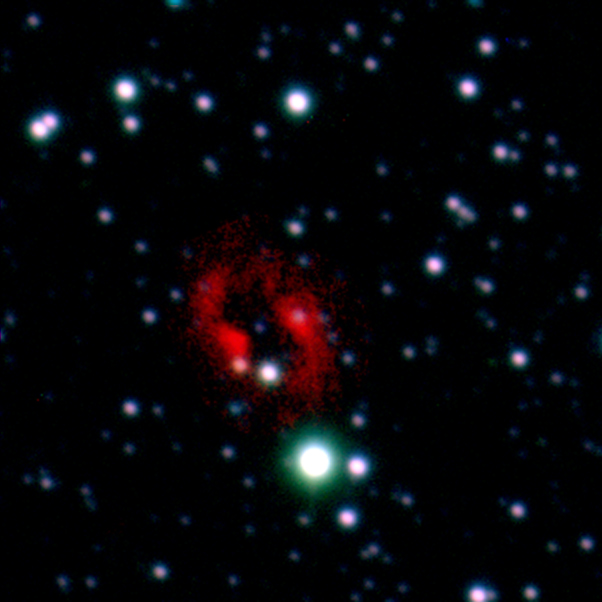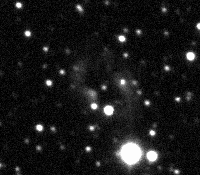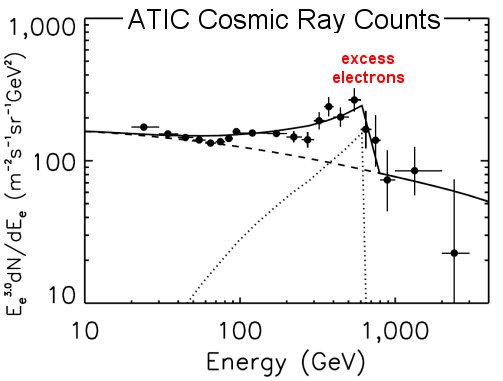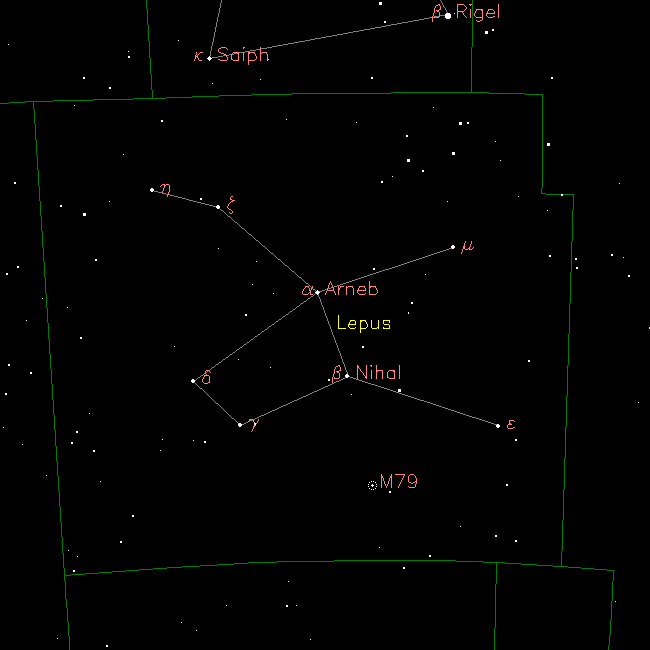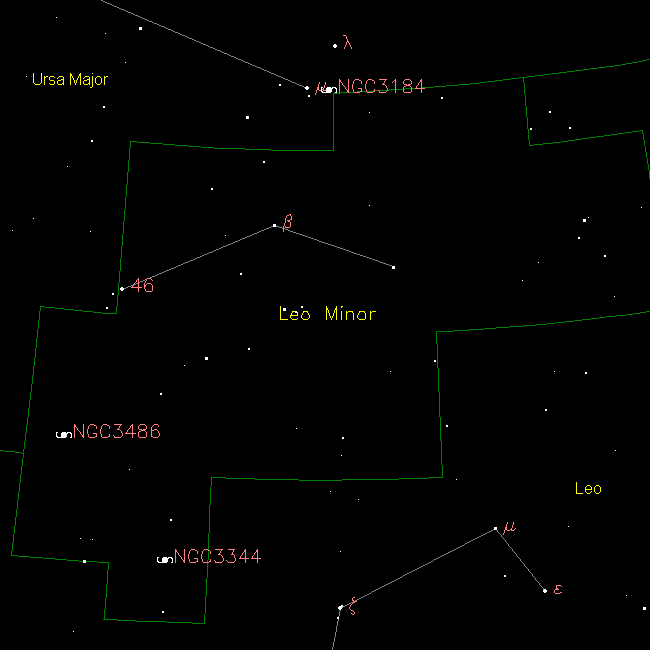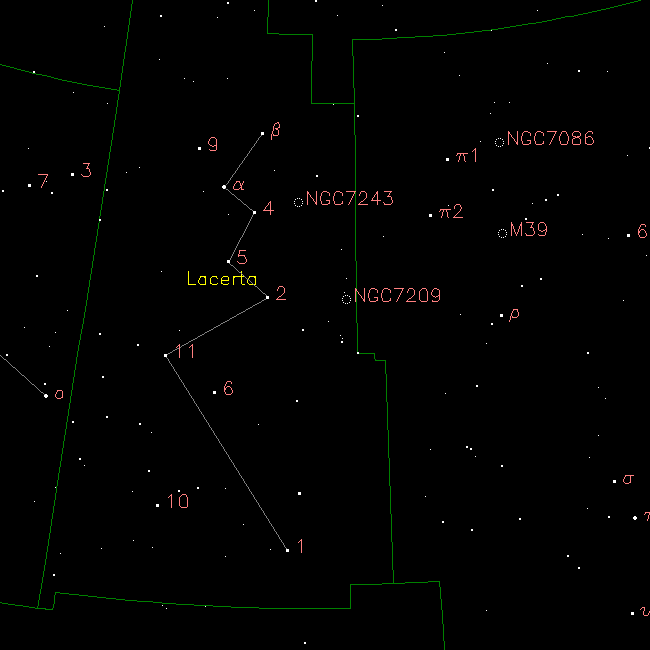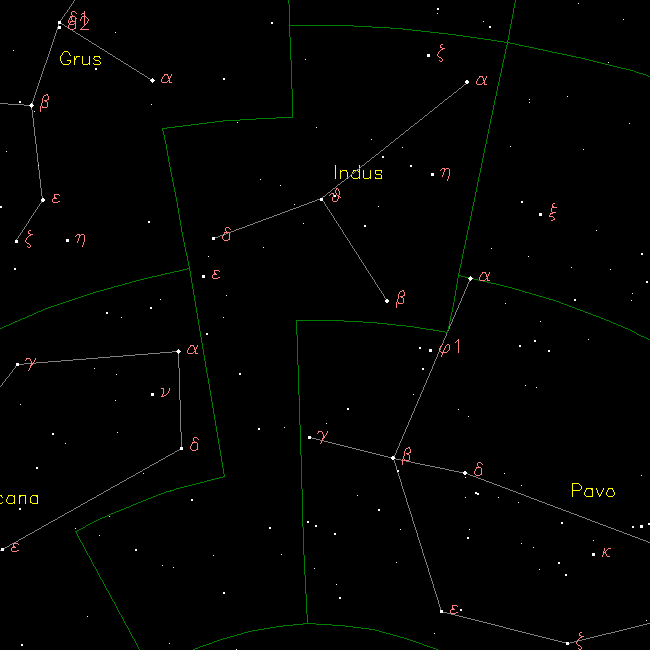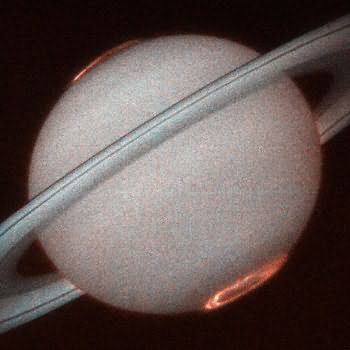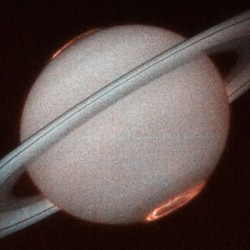Greetings, fellow SkyWatchers! Are you ready for one terrific weekend? Although the Moon will interfere, one of the year’s best meteor showers is about to happen – the Leonids. Will it be the super-storm that produced thousands of meteors as it did a few years ago? Don’t hold your breath – but chances are very good you’ll spot more than one meteor for just spending a little bit of time observing. For those who enjoy using small telescopes and binoculars, it’s time to rock with the Queen as we take a look around in Cassiopeia, too. Are you ready to rock the night? Then let’s go….
Friday, November 14, 2008 – This date in history marks the discovery of what we now refer to as a “Trans-Neptunian Object” – Sedna. In 2003 Brown, Trujillo and Rabinowitz went into the books for having observed the most distant natural solar system body to date. The rethinking of what it means to be a planet that this discovery inspired would eventually spell the end to Pluto’s reign as our ninth planet! Also on this day in 1971, Mariner 9 became the first space probe to orbit Mars. Can you still spot the faint Mars at sunset?
While Cassiopeia is in prime position for most northern observers, let’s head that way tonight for some fun studies. Starting with Delta, let’s hop to the northeast corner of our “flattened W” and identify 520 light-year distant Epsilon. For larger telescopes only, it will be a challenge to find the 12″ diameter, magnitude 13.5, planetary nebula known as I.1747 in the same field as magnitude 3.3 Epsilon!
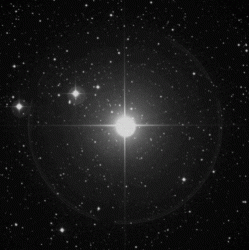 Using both Delta and Epsilon as our “guide stars,” let’s draw an imaginary line between the pair extending from southwest to northeast, continuing it the same distance until you stop at visible Iota (RA 02 29 03 Dec +67 24 08). Now go to the eyepiece… As a quadruple system, Iota will require a telescope and a night of steady seeing to split its three visible components. Approximately 160 light-years away, this challenging system will show little or no color to smaller telescopes, but to large aperture, the primary may appear slightly yellow and the companion stars a faint blue. At high magnification, the 8.2 magnitude C star will easily break away from the 4.5 primary, 7.2″ to the east-southeast. But look closely at that primary: hugging in very close (2.3″) to the west-southwest and looking like a bump on its side is the B star!
Using both Delta and Epsilon as our “guide stars,” let’s draw an imaginary line between the pair extending from southwest to northeast, continuing it the same distance until you stop at visible Iota (RA 02 29 03 Dec +67 24 08). Now go to the eyepiece… As a quadruple system, Iota will require a telescope and a night of steady seeing to split its three visible components. Approximately 160 light-years away, this challenging system will show little or no color to smaller telescopes, but to large aperture, the primary may appear slightly yellow and the companion stars a faint blue. At high magnification, the 8.2 magnitude C star will easily break away from the 4.5 primary, 7.2″ to the east-southeast. But look closely at that primary: hugging in very close (2.3″) to the west-southwest and looking like a bump on its side is the B star!
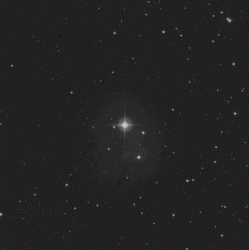
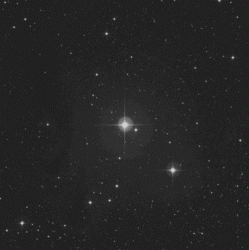
Dropping back to the lowest of powers, place Iota at the southwest edge of the eyepiece. It’s time to study two incredibly interesting stars that should appear in the same field of view to the northeast. When both of these stars are at their maximum, they are easily the brightest stars in the field. Their names are SU (southernmost – right) and RZ (northernmost – left) Cassiopeiae, and each is unique! SU (RA 02 51 58 Dec +68 53 18) is a pulsing Cepheid variable located about 1000 light-years away, and will show a distinctive red coloration. RZ (RA 02 48 55 Dec +69 38 03) is a rapidly eclipsing binary which can change from magnitude 6.4 to magnitude 7.8 in less than two hours. Wow!
Saturday, November 15, 2008 – On this day in 1990, Phil Harrington’s first book Touring the Universe through Binoculars was released, making the author a household name in the astronomy world. Since that time, Phil has published seven additional books, given countless lectures, is a contributing author to well-known astronomy periodicals, and presents technical training at Brookhaven National Laboratory. His achievements are many, and we salute you!
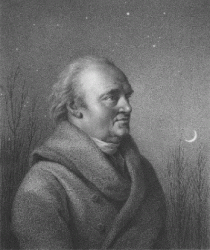 Above all, today we mark a very special birthday: on this day in 1738 my personal hero William Herschel was born. Among this British astronomer and musician’s many accomplishments, Herschel was credited with the discovery of the planet Uranus in 1781; detecting the motion of the Sun in the Milky Way in 1785; finding Castor’s binary companion in 1804 – and he was the first to record infrared radiation. Herschel was well known as the discoverer of many clusters, nebulae, and galaxies. This came through his countless nights studying the sky and writing catalogs whose information we still use today. Just look at how many we’ve logged this year! Tonight let’s look toward Cassiopeia as we remember this great astronomer…
Above all, today we mark a very special birthday: on this day in 1738 my personal hero William Herschel was born. Among this British astronomer and musician’s many accomplishments, Herschel was credited with the discovery of the planet Uranus in 1781; detecting the motion of the Sun in the Milky Way in 1785; finding Castor’s binary companion in 1804 – and he was the first to record infrared radiation. Herschel was well known as the discoverer of many clusters, nebulae, and galaxies. This came through his countless nights studying the sky and writing catalogs whose information we still use today. Just look at how many we’ve logged this year! Tonight let’s look toward Cassiopeia as we remember this great astronomer…
Although Herschel discovered many of the famous “400” objects in Cassiopeia just two days after his birthday in 1787, we only have a short time before the Moon rises, so let’s set our sights on the area between Delta and Epsilon and have a look at three of them: NGC 654, NGC 663 and NGC 659.
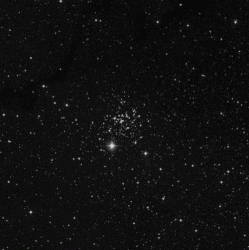 At magnitude 6.5, NGC 654 (RA 01 44 00 Dec +61 53 00) is achievable in binoculars, but shows as nothing more than a hazy spot bordered by the resolvable star HD 10494. Yet, set a telescope its way and watch this diminutive beauty resolve. It is a very young open cluster which has been extensively studied spectroscopically. Oddly enough, it did not cease production of low mass stars after the larger ones formed, and shows distinct polarization. Enclosed in a shell of interstellar matter, almost all of NGC 654’s stars have reached main sequence and two have been identified as detached binaries.
At magnitude 6.5, NGC 654 (RA 01 44 00 Dec +61 53 00) is achievable in binoculars, but shows as nothing more than a hazy spot bordered by the resolvable star HD 10494. Yet, set a telescope its way and watch this diminutive beauty resolve. It is a very young open cluster which has been extensively studied spectroscopically. Oddly enough, it did not cease production of low mass stars after the larger ones formed, and shows distinct polarization. Enclosed in a shell of interstellar matter, almost all of NGC 654’s stars have reached main sequence and two have been identified as detached binaries.
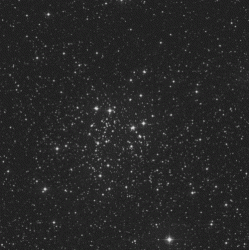 Now shift your attention to NGC 663 (RA 01 46 12 Dec +61 14 00). At magnitude 7, it is also viewable as a faint glow in binoculars – but is best in a telescope. With an age of about nine million years, this cluster contains the largest concentration of Be-type stars known: such stars show strong emission lines in hydrogen. While this might be considered “normal” for a B-type star, the mystery behind Be-types is that their emissions can simply end at any time – only to resume later. This could be in a matter of days, or it could be decades – but these odd stars may very well be victims of rapid rotation, high magnetic activity (similar to flares), or even interactions with a companion.
Now shift your attention to NGC 663 (RA 01 46 12 Dec +61 14 00). At magnitude 7, it is also viewable as a faint glow in binoculars – but is best in a telescope. With an age of about nine million years, this cluster contains the largest concentration of Be-type stars known: such stars show strong emission lines in hydrogen. While this might be considered “normal” for a B-type star, the mystery behind Be-types is that their emissions can simply end at any time – only to resume later. This could be in a matter of days, or it could be decades – but these odd stars may very well be victims of rapid rotation, high magnetic activity (similar to flares), or even interactions with a companion.
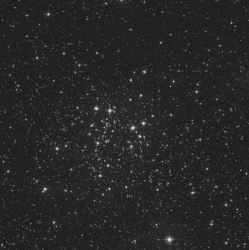 Time to head toward the faintest of the three – NGC 659 (RA 01 44 24 Dec +60 40 00). At magnitude 8, it is still within the reach of larger binoculars and will be fully resolved with a mid-sized telescope. Studied as recently as 2001, this looser collection contains seven newly discovered variables – three of which are Be stars. But, give credit where credit is due! For as avid as Sir William was about observing, he had an equally avid observing partner: his sister Caroline. This time it was her call, as she is credited with the discovery of this particular open cluster – four years before her brother added it to his list in 1787!
Time to head toward the faintest of the three – NGC 659 (RA 01 44 24 Dec +60 40 00). At magnitude 8, it is still within the reach of larger binoculars and will be fully resolved with a mid-sized telescope. Studied as recently as 2001, this looser collection contains seven newly discovered variables – three of which are Be stars. But, give credit where credit is due! For as avid as Sir William was about observing, he had an equally avid observing partner: his sister Caroline. This time it was her call, as she is credited with the discovery of this particular open cluster – four years before her brother added it to his list in 1787!
Sunday, November 16, 2008 – Today in 1974, there was a party at Arecibo, Puerto Rico, as the new surface of the giant 1000-foot radio telescope was dedicated. At this time, a quick radio message was released in the direction of the globular cluster M13.
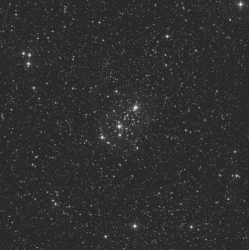 Tonight let’s take advantage of early dark and venture further into Cassiopeia. Returning to Gamma, we will move toward the southeast and identify Delta. Also known as Ruchbah, this long-term and very slightly variable star is about 45 light-years away, but we are going to use it as our marker as we head just one degree northeast and discover M103 (RA 01 33 24 Dec +60 39 00). As the last object in the original Messier catalog, M103 (NGC 581) was actually credited to Méchain in 1781. Easily spotted in binoculars and small scopes, this rich open cluster is around magnitude 7, making it a prime study object. About 8000 light-years away and spanning approximately 15 light-years, M103 offers up superb stars in a variety of magnitudes and colors, with a notable red in the south and a pleasing yellow and blue double to the northwest.
Tonight let’s take advantage of early dark and venture further into Cassiopeia. Returning to Gamma, we will move toward the southeast and identify Delta. Also known as Ruchbah, this long-term and very slightly variable star is about 45 light-years away, but we are going to use it as our marker as we head just one degree northeast and discover M103 (RA 01 33 24 Dec +60 39 00). As the last object in the original Messier catalog, M103 (NGC 581) was actually credited to Méchain in 1781. Easily spotted in binoculars and small scopes, this rich open cluster is around magnitude 7, making it a prime study object. About 8000 light-years away and spanning approximately 15 light-years, M103 offers up superb stars in a variety of magnitudes and colors, with a notable red in the south and a pleasing yellow and blue double to the northwest.
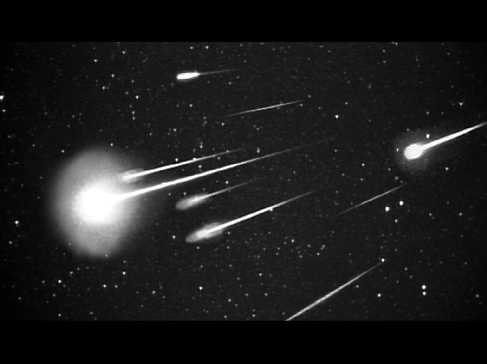 Keep watch for shooting stars tonight, because the annual Leonid meteor shower is underway. For those of you seeking a definitive date and time, it isn’t always possible. The meteor shower itself belongs to the debris shed by comet 55/P Tempel-Tuttle as it passes our Sun in its 33.2 year orbit. Although it was once assumed it would simply be about 33 years between the heaviest “showers,” we later came to realize the debris formed a cloud which lagged behind the comet and dispersed irregularly. With each successive pass of Tempel-Tuttle, new filaments of debris are left in space along with the old ones, creating different “streams” the orbiting Earth passes through at varying times, which makes blanket predictions unreliable at best.
Keep watch for shooting stars tonight, because the annual Leonid meteor shower is underway. For those of you seeking a definitive date and time, it isn’t always possible. The meteor shower itself belongs to the debris shed by comet 55/P Tempel-Tuttle as it passes our Sun in its 33.2 year orbit. Although it was once assumed it would simply be about 33 years between the heaviest “showers,” we later came to realize the debris formed a cloud which lagged behind the comet and dispersed irregularly. With each successive pass of Tempel-Tuttle, new filaments of debris are left in space along with the old ones, creating different “streams” the orbiting Earth passes through at varying times, which makes blanket predictions unreliable at best.
So if you didn’t stay up late, then get up early the next morning to catch the Leonids. Each year during November, we pass through the filaments of its debris – both old and new ones – and the chances of impacting a particular stream from any one particular year of Tempel-Tuttle’s orbit becomes a matter of mathematical estimates. We know when it passed… We know where it passed… But will we encounter it and to what degree? Traditional dates for the peak of the Leonid meteor shower occur as early as the morning of November 17 and as late as November 19, but what about this year? On November 8, 2005 the Earth passed through an ancient stream shed in 1001. Predictions ran high for viewers in Asia, but the actual event resulted in a dud. There is no doubt that we crossed through that stream, but its probability of dissipation was impossible to calculate. Debris trails left by the comet in subsequent years look promising, but we simply don’t know.
We may never know precisely where and when the Leonids might strike, but we do know that a good time to look for this activity is well before dawn on November 17, 18 and 19. With the Moon blocking the way, it will be difficult this year, but wait until the radiant constellation of Leo rises and the chances are good of spotting one of the offspring of periodic comet Tempel-Tuttle. Remember to dress warmly and provide for your viewing comfort.
Enjoy your weekend and remember… Ask for the Moon, but keep on reaching for the stars!
This week’s awesome images are: Iota, SU and RZ Cassiopeiae – Credit: Palomar Observatory, courtesy of Caltech, Sir William Herschel (widely used public image), NGC 654, NGC 653, NGC 659 and M103 – Credit: Palomar Observatory, courtesy of Caltech and Leonid Meteor Shower – Credit: NASA. We thank you so much!


